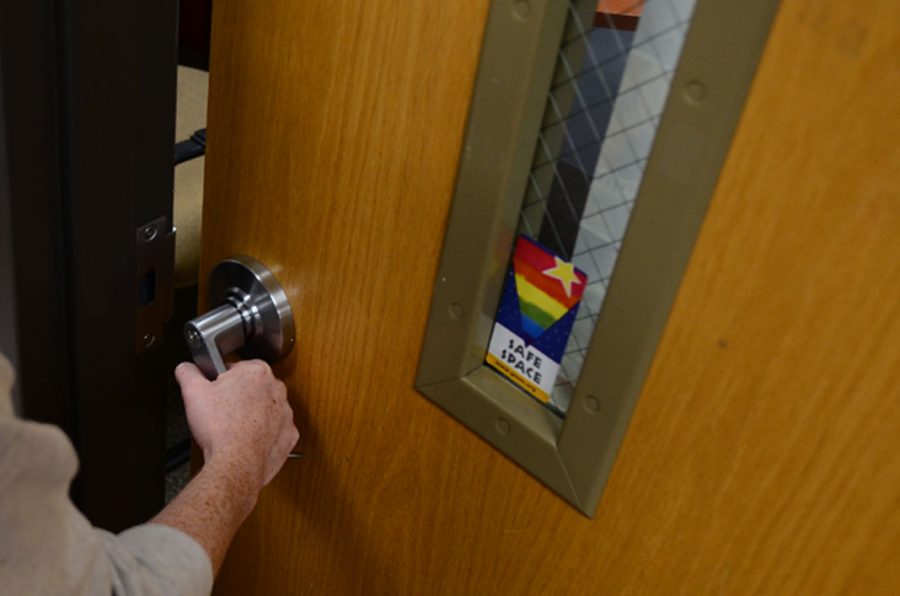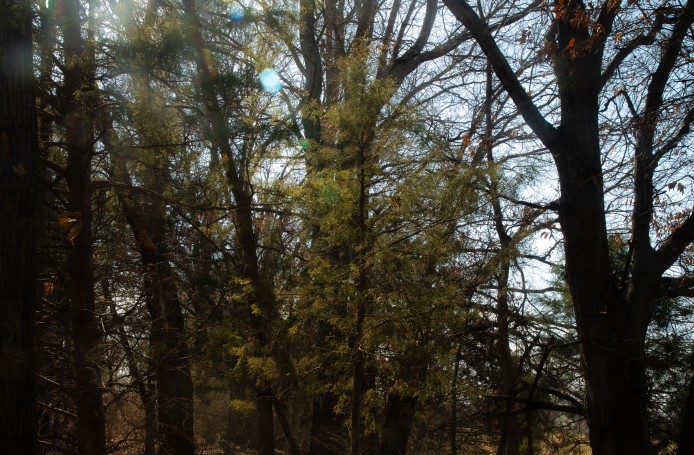In a welcome letter to incoming freshman this school year, University of Chicago administrators stated the university would not condone the use of trigger warnings or safe spaces on its campus. Their explanation for the new policy was that safe spaces and trigger warnings limit freedom to express opinions and also baby students by allowing them to retreat from ideas that oppose their own views.
Outreach counselor Lesley Thalhuber ultimately believes all schools should provide students with spaces where they can go if they need to be alone or someone to talk to privately. Despite that, she sees both sides of the argument.
“I’m definitely not a fan of coddling. Even with anxiety, people don’t learn a lot when they run from everything that creates anxiety. If a person never comes to school because school is anxiety-provoking, how will they ever become better at it?” Thalhuber said. “You have to be able to find a way to practice coping skills in the environment that creates anxiety. I also wouldn’t want that person to be harmed, so I think it’s a really tough argument. Every person is going to be different in terms of how much anxiety something produces.”
In some cases, having safe spaces at school seems vital, such as during the unit in health classes that talks about suicide. Thalhuber sometimes meets with certain students who have had first-hand experience with the topic and require a one-on-one conversation rather than a full group discussion. She wants there to be places at school for students to escape to if they feel uncomfortable, but is also torn by the thought that not learning about new ideas prevents emotional and mental growth.
Senior Ian Koopman, who is co-president of the Gay-Straight Alliance club, wholeheartedly believes all schools should have safe spaces because everyone deserves to feel safe at school, especially those who may not feel safe at home and need somewhere to be themselves. Hiding and being in fear of being oneself, he said, is not healthy.
“I think minority students are much more likely to need a safe space, especially L.G.B.T. students. Unlike a lot of issues that students may face at home, L.G.B.T. students might have parents, guardians or family members that are unaccepting of their identity,” Koopman said. “This means hiding girlfriends as ‘just friends’ and even going by a different name at school than at home. There is so much more to hide about yourself as an L.G.B.T. student in an unaccepting environment, along with the fear of both mental and physical harassment if you were to come out.”
In RBHS counselors and certain teachers have “safe space” stickers outside their doors to signify that students can come in and use the rooms to deal with their emotions if they need to. Another option for that is the nurse’s office. An L.G.B.T. community website sent the stickers to RBHS with the purpose of making sure that all students feel welcome here, especially L.G.B.T. students themselves, who more often than others do not feel like they can be themselves or they’ll be judged negatively. A 2011 study conducted by the Gay, Lesbian and Straight Education Network found that 64 percent of L.G.B.T. youth felt unsafe at school due to sexual orientation.
Utilizing safe spaces as a way to help students reach their full potential is what RBHS’s main focus should be, at least in chemistry teacher Gregory Kirchhofer’s opinion.
“Providing a safe place for individuals to be themselves, to test out their ideas and beliefs, and to find support promotes students achieving their fullest potential,” Kirchhofer said. “More acutely, individuals who experience discrimination, real or perceived, benefit from accessing supportive environments. And equally important, individuals who might be causing hurt, intentionally or not, benefit from a safe environment where issues can be addressed.”
As far as trigger warnings go, Thalhuber thinks it’s healthy for people to share ideas that are different from others’ and work on finding ways to disagree in a polite manner. She wishes educational settings would teach people how to argue their opinions well, especially by the time they reach college level.
Others, like Koopman, think trigger warnings as a very good thing and are necessary to accommodate students with trauma others may not know about, despite the fact that some make fun of the concept by saying people who need trigger warnings are simply too emotional.
“I can personally attest to a time I needed a trigger warning in class, when we were discussing the Vietnam War and my teacher put up a picture on the board of a Buddhist monk who had set himself on fire in protest,” Koopman said. “This was a very jarring image, and there was no warning associated. Warnings for especially sensitive or jarring content should be in place for students’ well-being. It isn’t an issue of being oversensitive, but an issue of feeling safe.”
Kirchhofer doesn’t have a lot of experience with the topic of trigger warnings but said he would most likely let his class know if they were about to engage in a discussion of a delicate subject. Before that, however, he would make sure to evaluate the value of the lesson.
“Does this activity support the goals of the class? Does the potential benefit outweigh a potential harm? But more importantly, I think developing an environment of mutual support and respect in my classroom is a far superior way to address potentially difficult situations,” Kirchhofer said. “Addressing difficult real world situations in a group of people that you know are willing to hear you and be supportive is far better that hearing, ‘Watch out folks, this is gonna sting…’”
Although they may have mixed views about the use of trigger warnings, Kirchhofer, Koopman and Thalhuber agree that safe spaces should be mandatory in school. Thalhuber sees it as if RBHS can be a safe place for students, that may be their only safe zone where they can let their guard down — or learn how to do so — and get support without having to deal with abuse, neglect or safety concerns.
“School can be people’s refuge, and I would hope that schools become more sensitive to student needs, especially when it comes to mental health,” Thalhuber said. “I think CPS does an amazing job of providing a mental health professional in all of the secondary buildings, such as an outreach counselor like myself, which means they’re either a licensed clinical social worker or a licensed professional counselor. We’re really fortunate to be in a district that does that.”
LATEST NEWS
- Stress, anxiety skyrocket as students prepare for upcoming AP tests
- RBHS holds successful night of percussion
- Not even water?
- Solar eclipse to pass through Missouri, April 8
- How CPS is organized: a guide
- City of Columbia to hold school board election April 2
- Youth Election Participants to assist in upcoming municipal election
- City of Columbia hosts first Community Engagement Session for McKinney Building, hopes to gain public insight on the structure’s future
- RBHS Track Team Opener at Battle Gallery
- March Mathness Photo Gallery
Safe spaces provide students with places to feel protected
October 11, 2016
View Comments (1)
@2021 - www.bearingnews.org























































































Kayla West • Nov 1, 2016 at 6:06 pm
I truly agree with each point in this article, as this is a very hard topic. I struggle with mental illness and grief I’ve had triggers occurred during classes without warning and are times when I know I need to remove myself from that particular situation because it is unhealthy. There have also been times when I acknowledge the discomfort and try to keep myself distracted because I know that throughout life I am going to face other triggers and I cannot always run from them or else I will never grow. Thank you for sharing this piece, I love your writing and you truly have a gift.